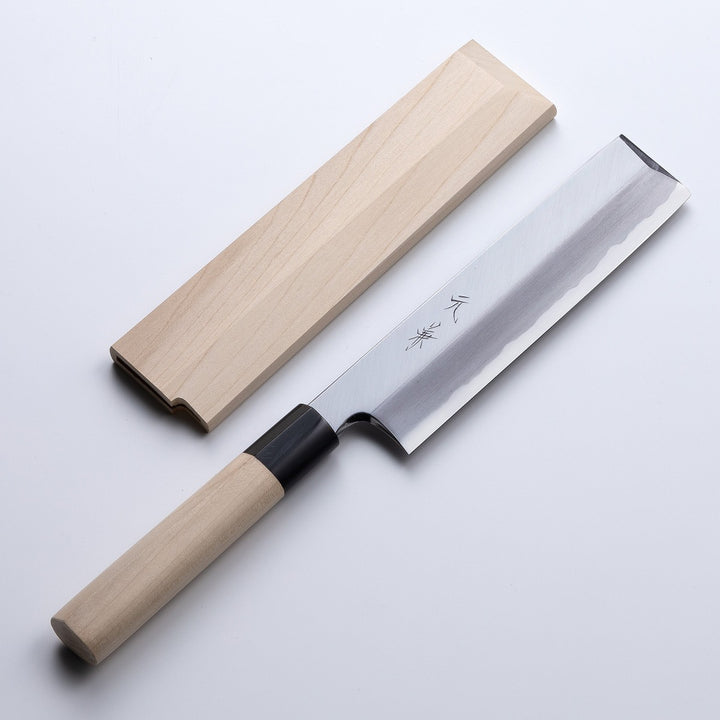Kitchen Knife
| Chef's Knife | Butcher Knife | Sashimi Knife |
 |
 |
 |
| Santoku Knife | Paring Knife | Nakiri Knife |
 |
 |
 |
| Other Knife | Whetstone | |
 |
 |
How to choose Japanese Kitchen Knives

The GYUTO, also known as a chef's knife, is a representative type of Western-style kitchen knife. While its name, "GYUTO" (which translates to "cow sword"), might give the impression that it is exclusively for cutting meat, that is not the case. It is a versatile knife that can handle a variety of ingredients, including meat, fish, and vegetables.
Best-Selling
Japanese Gyuto Knives

The perfect knife for cutting fish and smashing bone-in fish, meat, and fowl.
If you often use it for smashing purposes, a double-edged blade is recommended.
Best-Selling Japanese Deba Knives
 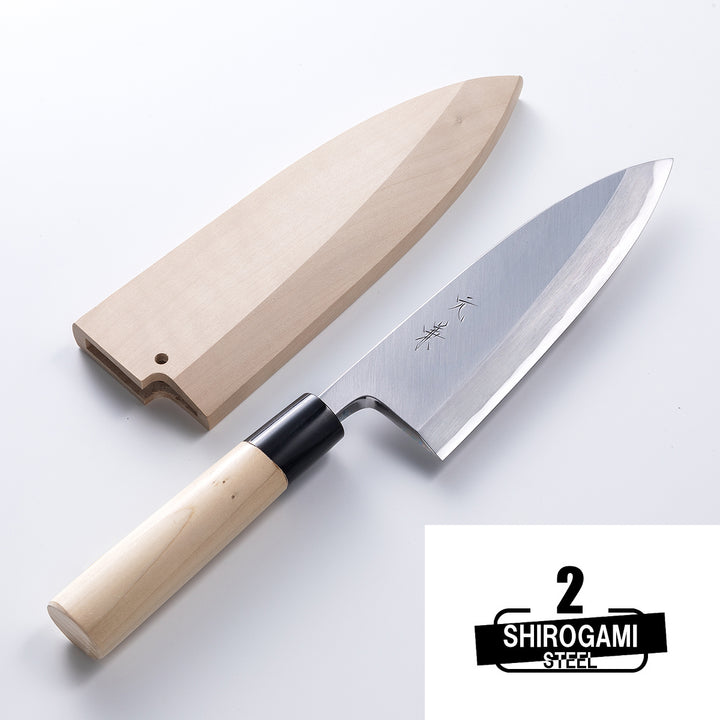 "YOSHIKAZU TANAKA" 
|
 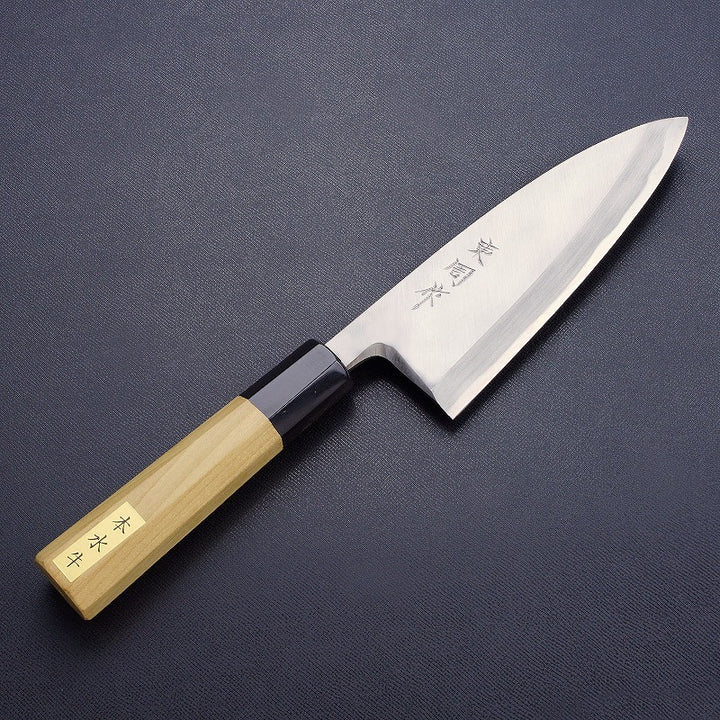 Deba (Butcher Knife) 
|
 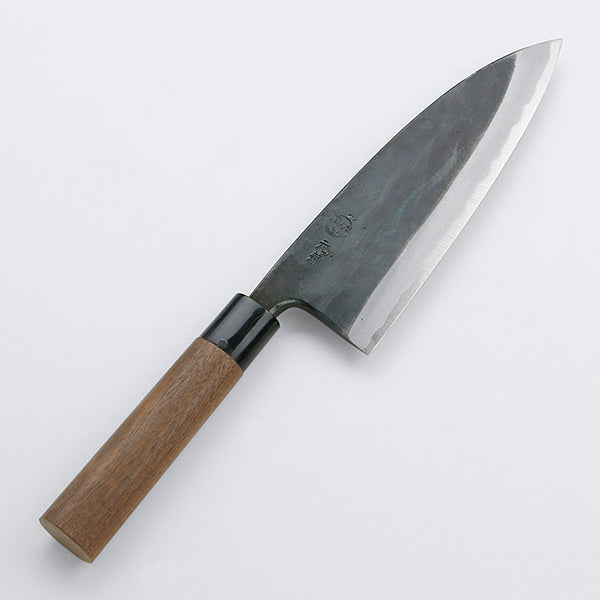 "MOTOKANE" Kurouchi 
|

A Yanagiba knife is a knife used for making sashimi. To cut sashimi cleanly, it must be sliced in one direction, which is why the blade is long and sharp. In the Kansai region, it is sometimes called Shobu or Masao because its shape resembles the leaf of an iris.
Nowadays, the Yanagiba knife is almost exclusively used for slicing sashimi. It is so popular that when people refer to a "sashimi knife," they are generally talking about the Yanagiba knife.
Best-Selling
Japanese Yanagiba Knives
 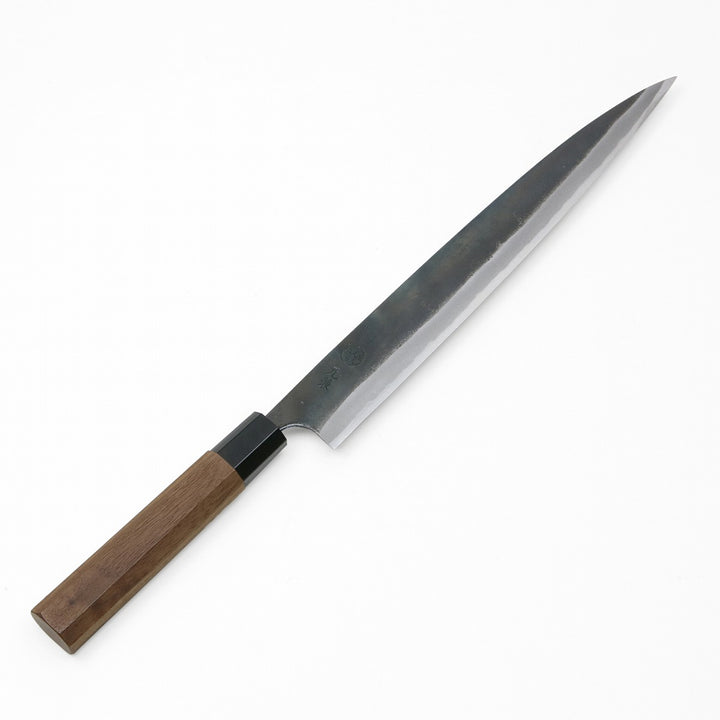 HONMAMON 
|
 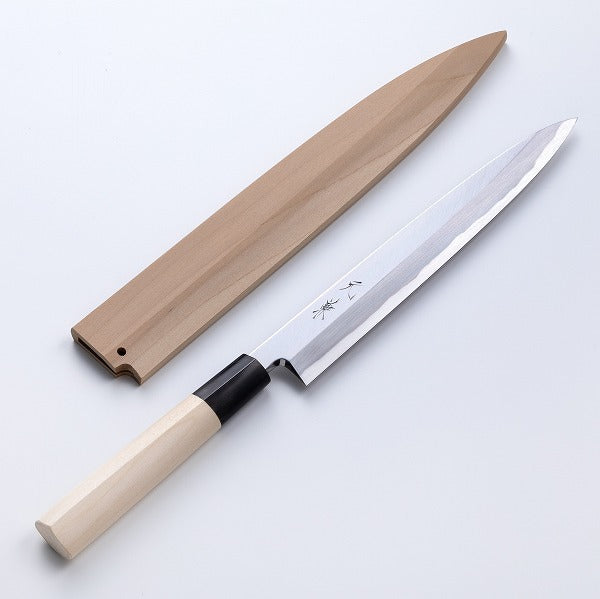 "YOSHIKAZU TANAKA" 
|
 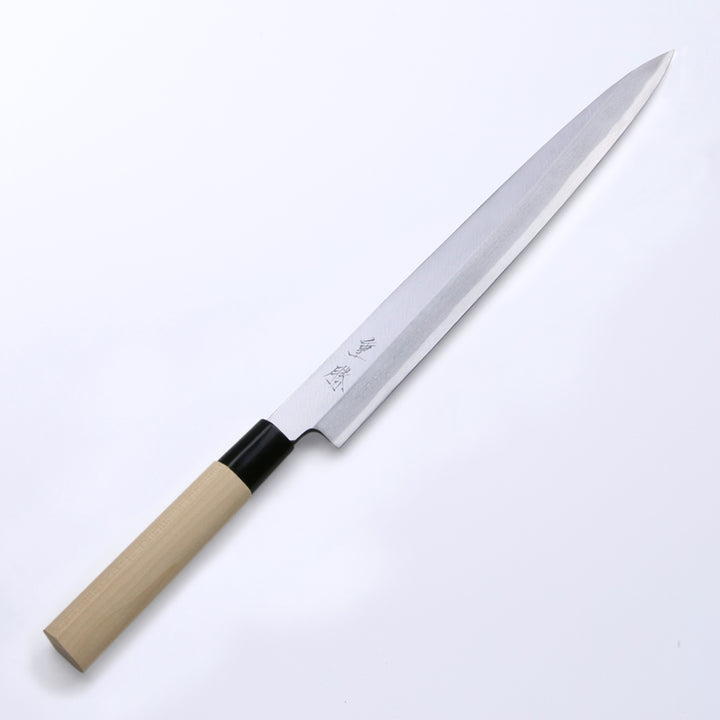 'SHIGEKATSU' 
|

The Santoku knife is a versatile kitchen knife with a blade length of approximately 165mm to 180mm, suitable for cutting meat,
fish, and vegetables.
It was developed in the 1940s when Japanese dietary habits began to change,
combining the characteristics of traditional Japanese Nakiri and Deba knives with the Western chef's knife.
The term "Santoku" literally means "three virtues," referring to its ability to handle a wide range of ingredients and cutting techniques with ease.
As a result, it has become one of the most popular kitchen knives in Japanese households.
If you are considering a gift or purchasing your first kitchen knife, a Santoku knife is a reliable choice for general home cooking.
Best-Selling
Japanese Santoku Knives
 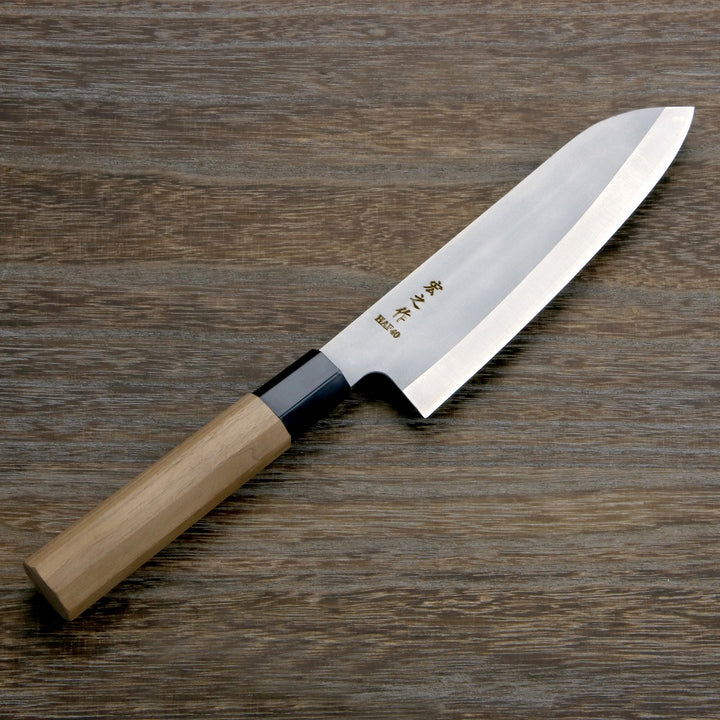 Santoku 
|
 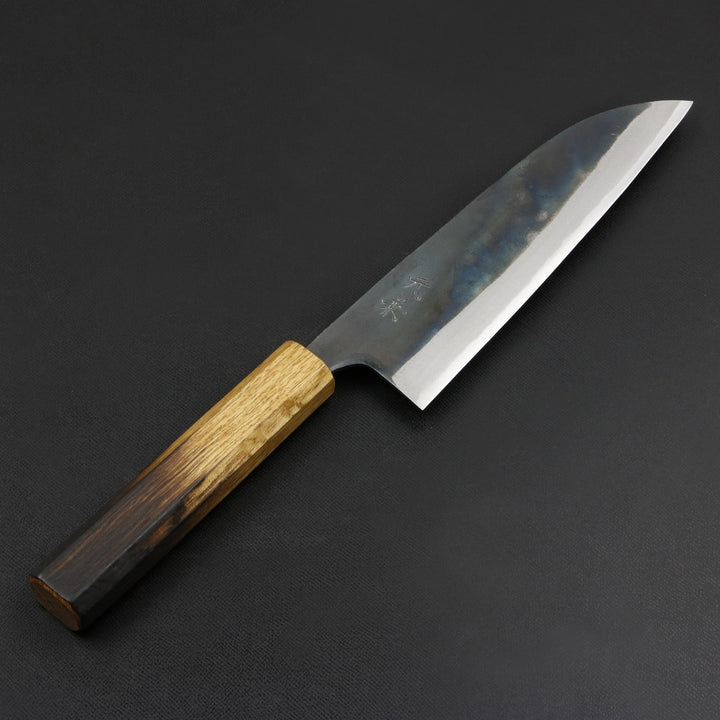 MOTOKANE Santoku 
|
 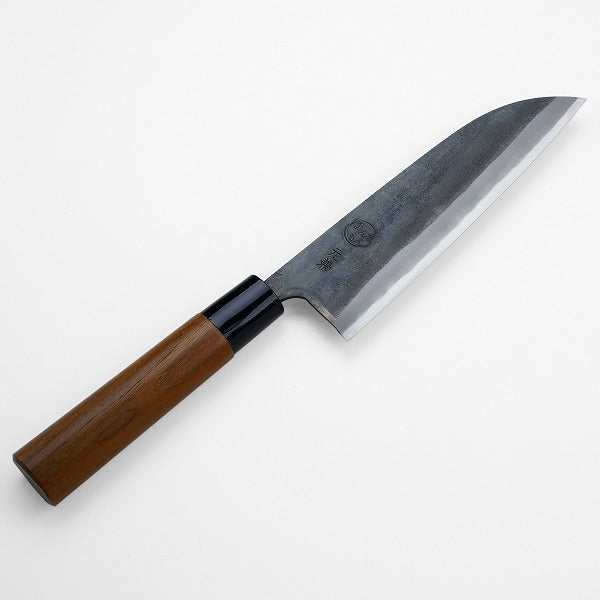 MOTOKANE 
|

A petty knife (Paring knife) is a small knife with a blade length of 150mm or less, commonly used for peeling vegetables and fruits,
as well as intricate cutting tasks.
Due to its maneuverability, it is ideal for peeling small vegetables like potatoes, slicing fruits, and decorative cutting.
Additionally, its compact size makes it convenient to carry, making it a popular choice for camping and outdoor activities.
When taking it outdoors, use a knife sleeve and ensure it is stored in a bag in a way that does not reveal it as a blade.
Best-Selling
Japanese Petty Knives
 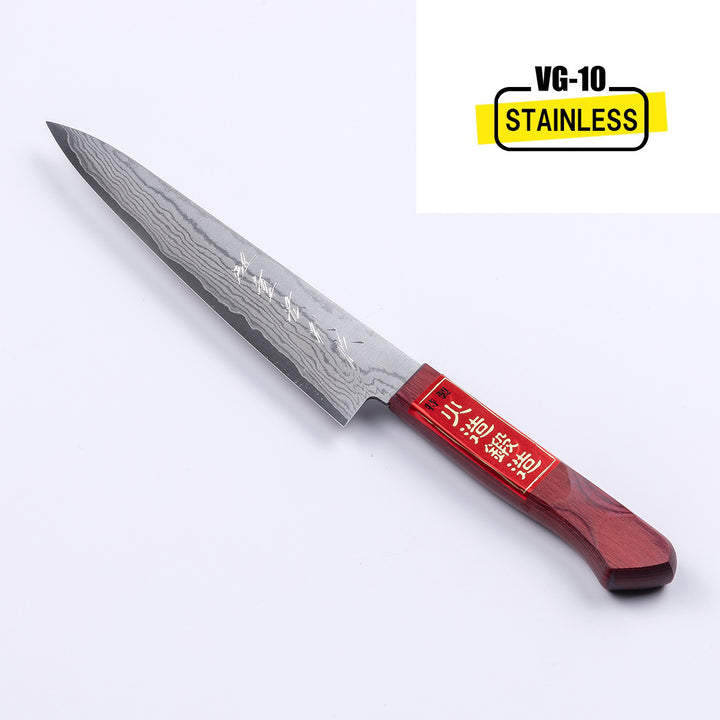 HONMAMON "SHIGEHIRO" 
|
 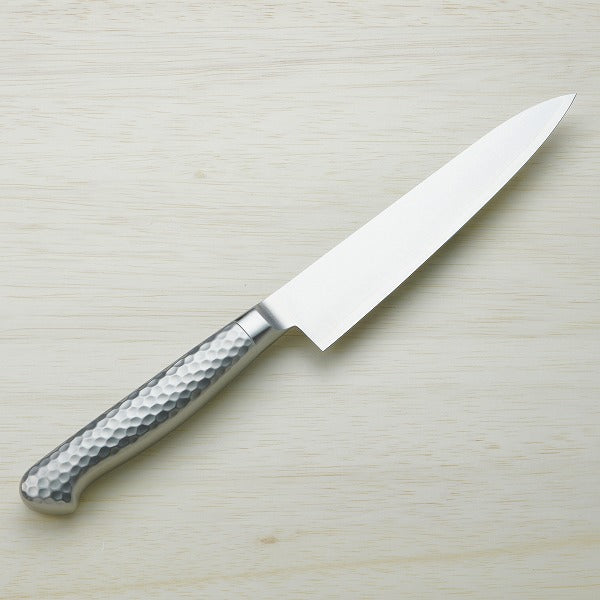 HONMAMON Petty 150mm 
|
  "HONMAMON" Petty 135mm 
|

Nakiri and Usuba Knives – Essential for Vegetable Preparation
Nakiri knives have a straight-edged blade, ideal for precise vegetable cutting like julienning and katsuramuki.
While great for vegetables, they are less effective for meat and fish, so pairing them with other knives like santoku or gyuto is recommended.
Usuba knives, with their thin, single-edged blade, excel in delicate tasks such as decorative cutting and thin peeling in Japanese cuisine.
Their sharpness ensures clean, aesthetic cuts, making them a staple for chefs handling fine details.
Choosing the right knife enhances efficiency and elevates dish presentation
Best-Selling
Japanese Nakiri Knives
Customer Review

|

|

|

|

|

|

|

|
























